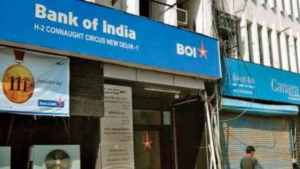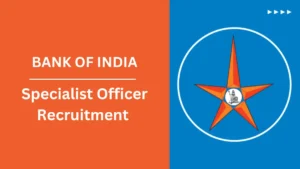There are total ten persons divided in two groups. In each group there is equal number of person. They sit in two parallel rows while they are in meeting. One group faces north while other group faces south in such a manner that each member of group one faces other member of group two. In group 1- there are five persons A, B, C, D and E and all of them facing towards north direction. In group2-there are five persons P, Q, R, S and T and all of them facing south direction. All of them like different colour like Pink, Red, Blue, Black, White, Green, Yellow, Violet, Brown and Orange but not necessarily in the same order. P sits third to right of Q. Immediate neighbor of Q faces the person who likes pink colour. There are gap of two persons between the one who likes pink and the one who likes red colour. There is only one person between R and S. Neither R nor T face the person who likes red colour . Immediate neighbor of P faces the person who like blue colour. E likes blue colour. There is only one person between E and the one who like Black colour. The one who likes white colour faces the one who likes the green colour. There are gap of two persons between the one who likes the white and the one who likes yellow colour. The one who likes the violet colour is not immediate nighbour of one who likes white colour. A likes red colour and sits third to left of D. B does not like black colour. R likes brown colour.
Q1.Who among the following sits at the corner?
(a) A,Q
(b) A,D
(c) P,A
(d) D,Q
(e) None of these
Q2. Who sits third to right T?
(a)The one who likes orange colour.
(b)The one who likes yellow colour.
(c) The one who likes violet colour.
(d) The one who likes white colour.
(e) None of these
Q3. S is related to A and R is related to E, in the same way T is related to?
(a) A
(b)D
(c) B
(d) C
(e) None of these
Q4.Immediate neighbor of A faces which person?
(a) The one who like brown colour
(b) T
(c) The one who like red colour
(d)The one who like white colour
(e) Q
Q5. Who among following likes yellow colour?
(a)T
(b)The one who sits one of the corner.
(c) The one who sits third to left of R.
(d) The person who faces pink colour.
(e) The person who is immediate neighbor of one who like white colour.
Directions (6-10): Each of the questions below consists of a question and two statements numbered I and II given below it. You have to decide whether the data provided in the statements are sufficient to answer the question.
Read both the statements and given answer:
(a) if the data in statement I alone are sufficient to answer the question, while the data in statement II alone are not sufficient to answer the question
(b) if the data in statement II alone are sufficient to answer the question, while the data in statement I alone are not sufficient to answer the question
(c) if the data either in statement I alone or in statement II alone are sufficient to answer the question
(d) if the data given in both statement I and II together are not sufficient to answer the question
(e) if the data in both statements I and II together are necessary to answer the question.
Q6. On which day in September was definitely Shobha’s mother’s birthday?
I. Shobha correctly remembers that her mother’s birthday is before eighteenth but after twelfth September.
II. Shobha’s sister correctly remembers that her mother’s birthday is after fifteenth but before nineteenth July.
Q7. How is ‘too’ written in a code language?
I. ‘go too the tree’ is written as ‘sa na pa ta’ in that code language.
II. ‘tree is too home’ is written as ‘ja pa da sa’ in that code language.
Q8. Among A, B, C, D and E, each having scored different marks in an exam, who has scored the lowest marks?
I. D has scored more marks than only three of them.
II. A has scored more marks than only E.
Q9. What is the position of P with respect to Q(Counted from left of Q) in a round table seating arrangement if all of them are facing towards the center of table?
I. Seven persons P, Q, R, S, T, U and V sat around a round table where P sat between U and V, S sat adjacent to V and R did not sit adjacent to S.
II. T sat on the immediate right of U.
Q10. How is T related to W?
I. P is brother of M and fatherof T. M is the son of W.
II. M is father of S. V is grandmother of S.
Q11. Statements: Directions (11-15): In each of the questions below are given four statements followed by four conclusions numbered I, II, III & IV. You have to take the given statements to be true even if they seem to be at variance with commonly known facts. Read all the conclusions and then decide which of the given conclusions logically follows from the given statements disregarding commonly known facts.
Some books are cars.
All cars are shops.
All shops are nets.
Some nets are dresses.
Conclusions:
I. Some dresses are cars.
II. Some nets are books.
III. Some shops are books.
IV. Some dresses are books.
(a) Only I and III follow
(b) Only II and III follow
(c) Only I and IV follow
(d) Only II, III and IV follow
(e) None of these
Q12. Statements:
Some cars are kites.
Some kites are desks.
All desks are jungles.
All jungles are trains.
Conclusions:
I. Some trains are cars.
II. Some jungles are cars.
III. Some trains are desks.
IV. Some jungles are kites.
(a) Only I and III follow
(b) Only I, II and III follow
(c) Only III and IV follow
(d) Only II, III and IV follow
(e) None of these
Q13. Statements:
All mobile are clips.
Some clips are fruits.
Some fruits are lanes.
All lanes are roads.
Conclusions:
I. Some roads are fruits.
II. Some lanes are clips.
III. Some fruits are mobile.
IV. Some roads are clips.
(a) Only I and II follow
(b) Only I and III follow
(c) Only I, II and III follow
(d) Only II, III and IV follow
(e) None of these
Q14. Statements:
All pens are shirts.
Some shirts are jeans.
Some jeans are wheels.
Some wheels are buses.
Conclusions:
I. Some buses are jeans.
II. Some wheels are shirts.
III. Some wheels are pens.
IV. Some buses are shirts.
(a) None follows
(b) Only I follows
(c) Only II follows
(d) Only III follows
(e) Only IV follows
Q15. Statements:
All laptops are hammers.
No hammer is a ring.
Some rings are doors.
All doors are chairs.
Conclusions:
I. Some chairs are laptops.
II. Some chairs are rings.
III. No chairs is a laptops.
IV. Some rings are laptops.
(a) Only I follows
(b) Only II follows
(c) Only III follows
(d) Only either I or III follows
(e) Only either I or III and II follow
- More questions on Reasoning for Bank exam
- Reasoning ability study notes and tips
- Know all about IBPS RRB 2017 – Dates, Syllabus, Pattern & More!





 National Youth Day 2026 in India, Check ...
National Youth Day 2026 in India, Check ...
 BOI SO Interview Schedule 2026 Out, Chec...
BOI SO Interview Schedule 2026 Out, Chec...
 Bank of India SO 2025-26 Exam Date Out, ...
Bank of India SO 2025-26 Exam Date Out, ...








